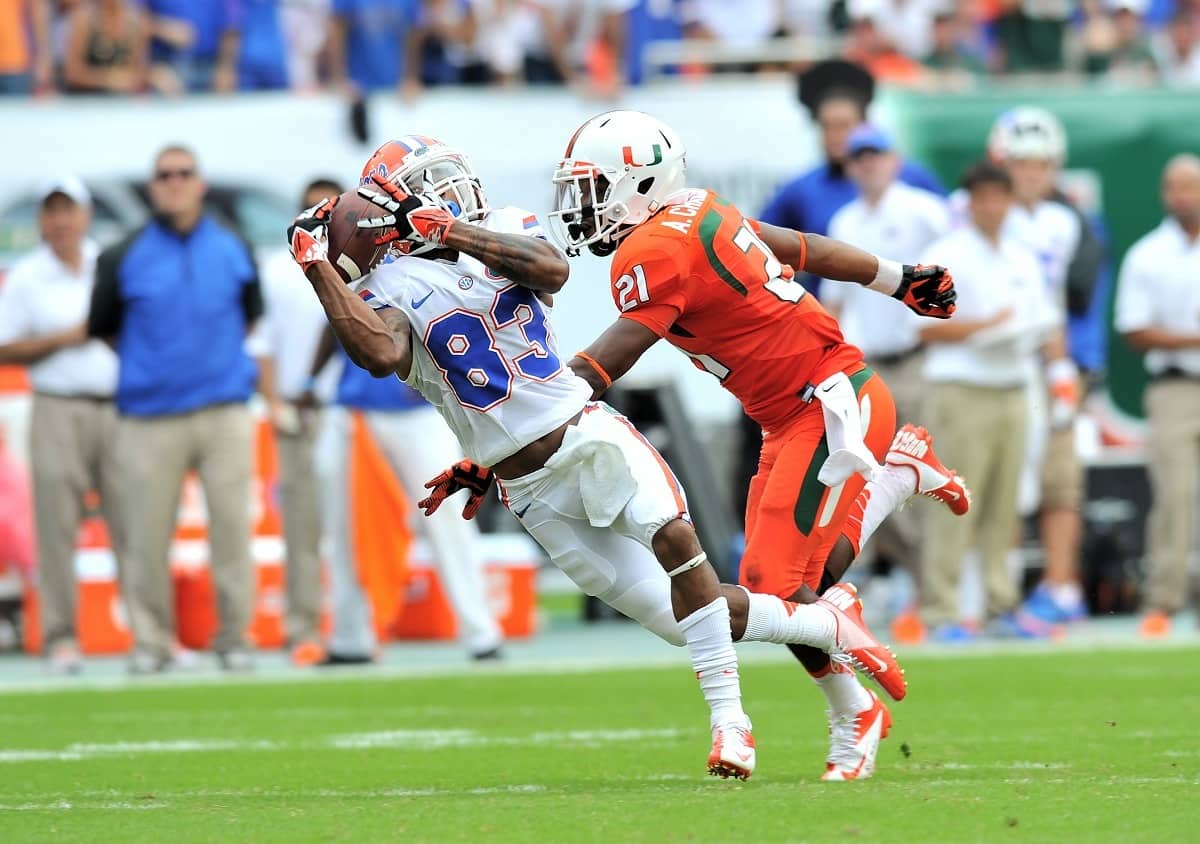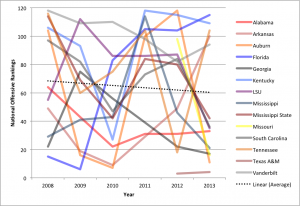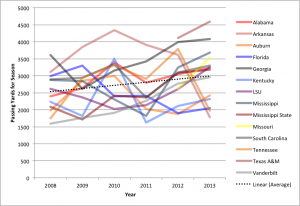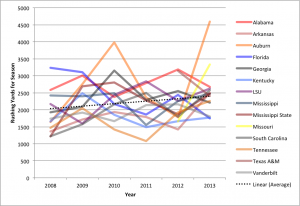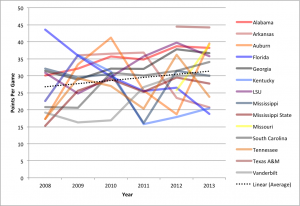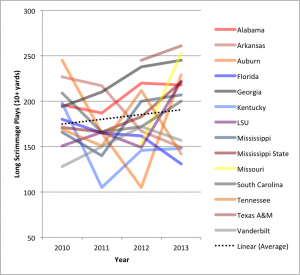In a two-part series Gator Country’s Dan Thompson analyzes the changing nature of the Southeastern Conference.
The Southeastern Conference has built its reputation on the principles of stout defense. Since it’s creation in 1932, the SEC has consistently fielded some of the top defenses in the country that always seemed to be a bit bigger, a bit faster, and a bit stronger than the rest of the country.
However, over the past six years, there has been a noticeable statistical change with regard to the production of offenses in the SEC, and subsequently a decrease in the strength of the defenses.
When looking at the SEC over the past few years a few names quickly come to mind: Tim Tebow, Johnny Manziel, Mark Ingram, Trent Richardson, Cam Newton, Percy Harvin. While, yes, there are quite a few defensive players that that come to mind, none resonate quite as much as the offensive firepower that has now found its home in the SEC.
Over the past six seasons, statistics show that there has been a steady increase in the quality of offense output across the conference in every statistical category, although as Gator fans have seen it is not necessarily constant for all teams.
Average National Offensive Ranking
Below, you see the rankings of SEC offenses over the past six seasons and the gradual improvement from an average ranking of 74th overall in 2008 to 53rd in 2013.
Over the statistical period, you see that the two newest additions to the SEC, Texas A&M and Missouri, had a big impact in the improvement of the SEC in national ranking. Texas A&M head coach Kevin Sumlin and quarterback Johnny Manziel had the 3rd and 4th ranked offenses over the past two seasons. Further, Missouri improved from 98th in 2012 to 16th in 2013.
Other things you will notice drastic improvements from Mississippi State (114th in 2008 to 42nd in 2013) and Auburn (104th in 2008 to 11th in 2013). You can attribute the rise in these numbers to their coaching staffs, Dan Mullen at Mississippi State and Gus Malzahn at Auburn, who both bring high-tempo, spread offenses that move the ball quickly down in the field with high production. Other teams that have seen a net improvement over time has been Alabama, Georgia, LSU, Mississippi, South Carolina, and Vanderbilt.
One thing you will also notice is the drastic decrease in offensive production by Florida which stayed in the top-20 during the first two years of charting, but has not eclipsed 83rd since.
Finally, you will notice that in 2011 numbers seemed bad – well, they were. In 2011, only three teams eclipsed the top-40 mark, while eight teams ranked in the bottom-80.
The 2011 season was a weird year for college football. Arkansas quarterback Tyler Wilson had the best statistical year for quarterbacks by nearly 55 yards per game; only two running backs averaged more than 100 yards per game (Alabama RB Trent Richardson and Auburn RB Michael Dyer); no wide receiver averaged more than 100 yards receiving a game; and the top ranked offense in 2011 (Arkansas – 438.1 yards per game) would have ranked eighth in the SEC in 2013.
Passing Yards
Continuing the trend, you see a steady improvement to almost 450 more yards passing per season in 2013 over 2008. In 2008, six teams had less than 2,617 yards passing, in 2013 (with two more teams) only five teams had less than 2,600 yards. If that does not convince you, in 2008 only two teams had more than 3,000 yards passing, in 2013, eight teams passed for 3,000-plus yards, including two teams passing for more than 4,000 yards.
Rushing Yards
Again, you see a steady increase over time to more than 400 additional yards per season. In 2008, only one team averaged more than 200 yards rushing per game (Florida – 231.14), with the next best team (Ole Miss) coming in 45 yards less per game. In 2013, five teams came in at the 200-plus mark, with one team (Auburn) averaging 328.29 yards per game. 2008 Florida would have ranked 3rd in the SEC in 2013 and 2008 Ole Miss would rank 10th – a staggering difference. In 2013 the worst rushing attack statistically was Vanderbilt with an average of 139 yards per game, an average that would have earned 6th place in the 2008 SEC.
Points per game
Of course, the numbers continue to show the offensive output in the most important category – points per game. In 2008, five teams averaged more than 30 points per game, with Florida leading with a 43.6 point per game average. In 2013, that number has grown to nine teams averaging more than 30 points per game, with Texas A&M leading the way with 44.2 points per game. Continuing, the atrocious Florida offense than ranked last in the SEC in scoring (18.8) would have ranked 10th in the SEC in 2008, with Tennessee, Auburn and Mississippi State all averaging 17.3 points per game or less.
Long Scrimmage Plays
The final category is a review of long scrimmage plays, a statistic that has only been tracked since 2010. Again, you will see a steady growth across the board, from an average of 186 in 2008 to 197 in 2013. During this time, Alabama, Georgia, LSU, Mississippi, Mississippi State, Missouri, Texas A&M and Vanderbilt have seen improvements over time, with Kentucky, South Carolina showing growth over the last three years.
Final Review
The steady growth is a result of a few things: the growth of no-huddle offenses, which has seen average plays per game jump to 69.72 in 2013 from 64.86 in 2008; new offensive head coaches that have focused on high-powered offenses (Gus Malzahn, Dan Mullen, Kevin Sumlin, Gary Pinkel), even bearing in mind the losses of Urban Meyer and Bobby Petrino who both had very high statistical offensive numbers; the addition of Missouri and Texas A&M has helped numbers grow steadily; and finally, as you will see in part two, the defensive numbers of the SEC have gone down.
There should still be a continued steady growth in 2014 and beyond.


